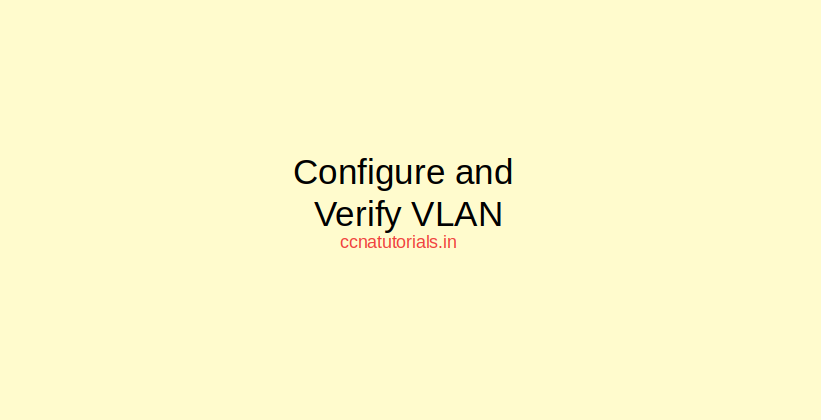Contents of this article
In this article I describe the Cisco Wireless Architecture and AP modes for CCNA 200-301 exam. Cisco Wireless Architecture and AP modes belongs to the network access section of CCNA 200-301 syllabus. AP modes are generally known as access point modes used to provide the wireless connectivity for clients or nodes. Cisco Wireless Architecture and AP modes connects the wireless network with a wired network to transfer the data securely. The Cisco Wireless Architecture and AP modes divided in three types Autonomous AP Architecture, Cloud based AP architecture and Split MAC AP architecture. I will describe each of the above one by one in this article of Cisco Wireless Architecture & AP modes.
Autonomous AP architecture of Cisco Wireless Architecture and AP modes
The main function of Cisco Wireless Architecture and AP modes is to provide connectivity between wireless and wired network to transfer the data. Autonomous AP architecture made to provide the connectivity to many wireless clients simultaneously and the network behaves like a LAN. The Autonomous AP architecture provide a central Access point which control the whole wireless network and devices. The central access point have both connectivity wireless and wired so the data can be transferred between wireless and wired network. The data encrypted and decrypted during transmission of data. Cisco uses its own three layer architecture which is consist of Core layer, Distribution Layer and Access Layer. Cisco Wireless Architecture and AP modes is an advance version of Cisco three layer architecture. See the below diagram which explained the cisco three layer hierarchical architecture.

Autonomous AP architecture of Cisco Wireless Architecture and AP modes provides basic service sets generally known as BSSs. Autonomous APs connects the wireless service set identifiers (SSIDs) with wired virtual LANs at access layer of Cisco three layer hierarchical architecture. A hundred or thousands APs can be used in a network to provide connectivity to the clients as shown in below figure.

An Autonomous AP architecture of Cisco Wireless Architecture and AP modes uses the shortest and easy path for data travel between wireless and wired networks. AP works as gateway between wired and wireless network. A device connected with wireless network of AP can transfer the data with another wireless connected device without passing the data from wired network. In above image the core switch and access layer switches are connected via trunk mode port to transfer the data between various VLANs. A fix IP address assigned to each autonomous AP for remotely management and configuration of autonomous AP. The main parameters required to be configured are SSIDs, VLANs Channel and transmit power etc.
Every autonomous AP required to communicate for data and management the VLANs. The SSIDs of every AP and their VLANs required to be extended at layer 2 for communication between the wireless and wired network for all VLANs.
Cloud based AP architecture in Cisco Wireless Architecture and AP modes
In case of Cloud based AP architecture it is required to install an AP management platform like Cisco Prime Infrastructure for configuration and management of all autonomous AP in the network. The management platform should be installed in the internet cloud so any autonomous AP can be accessed centrally for configuration and management. Cisco Meraki is cloud based management system used in Cisco Wireless Architecture & AP modes for centralized management, monitor the wireless performance and activities of wireless autonomous Aps.
The Cisco Meraki AP need to register with it once and not required any manual configuration or purchase. After registration with Cisco Meraki all APs will auto configure according to the Cisco Meraki management. After auto configuration any AP can be configured with the help of Cisco Meraki dashboard. The most important thing about it is that all APs can be configured, managed and monitored centrally from the cloud. Below image explain the Function of Cisco Meraki controller in cloud network.

Cisco Meraki push the configuration code and updates to the APs of the cloud network also the channel and transmission power of any APs can be controlled by the Cisco Meraki. The Cisco Meraki have full control on the APs statistics, interfaces etc.
Split MAC architectures in Cisco Wireless Architecture and AP modes
Split MAC architectures used to provide the network security to all autonomous APs of the network. Each AP works with its own security policy. The security related to intrusion and prevention system, QoS, Bandwidth management etc, to control these security related issues some central location used for management. The activities of any autonomous AP can be divided in two group management functions and Real Time functions as shown in below image.

The Management functions of Autonomous AP covers the RF power output management, QoS, Security management, Client Authentication and other management programs. On the other end the real time functions relates with transfer the data frames, data encryption and decryption etc.
The 802.11 frames received and transferred in real time processing by autonomous AP. The autonomous AP interact with the clients on physical layer known as MAC layer. The management of the autonomous AP managed by a centrally administrator for RF power output and security management.
The hardware of autonomous AP is known as lightweight access point which perform only the real time operation. The management of autonomous AP is generally done by WLC (wireless LAN controller). The main things used for security performance are user authentication of users and managing security policies etc. layer 1 and layer 2 used for movement of frames in same RF domain.
A general term CAPWAP known as Control and Provisioning of Wireless Access Point tunneling protocol used to encapsulating the data within the wireless network. The CAPWAP relationship consists of two separate tunnels as CAPWAP control messages and CAPWAP data.
CAPWAP control messages in Split MAC architectures in Cisco Wireless Architecture and AP modes
The carriers of CAPWAP control messages exchanges the codes which are used to configure the AP and manage its operation. The control messages are authenticated and encrypted to securely control the AP only by the related WLC.
CAPWAP data in Split MAC architectures in Cisco Wireless Architecture and AP modes
CAPWAP data used for travel of packets between different wireless clients connected with single AP. Data packets transported on the data tunnel without encryption by default. When data encryption enabled packets protected with datagram transport layer security (DTLS).
Some important WLC activities are below
WLC automatically assigned the RF channel for each AP it is known as Dynamic Channel Assignment. WLC automatically adjust the RF power output for each autonomous AP according to the coverage area. this property is known as Transmit Power Optimization. In case of failure of any AP the surrounding AP covers the area by increasing the RF output power. this is known as Self-healing wireless coverage. The clients uses flexible client roaming for roam between different APs it is known as Flexible Client Roaming. The traffic controlled by dynamic client load balancing property of WLC. This property provides load balancing to the all APs belongs to same geographical area. The RF characteristics of each AP monitor by WLC. Some characteristics are RF interference, noise, signal strength etc.
That is all about the Cisco Wireless Architecture with AP modes in networking. In this article I describe the Cisco Wireless Architecture with AP modes for CCNA Exam. I hope you found this article helpful. You may drop a comment below or contact us for any suggestion. your suggestions are always welcome by us.





